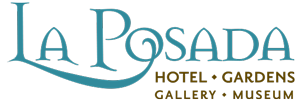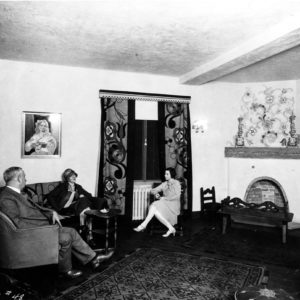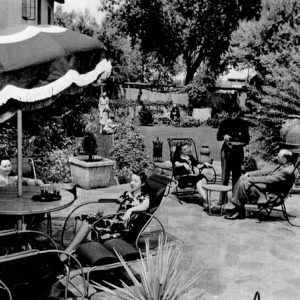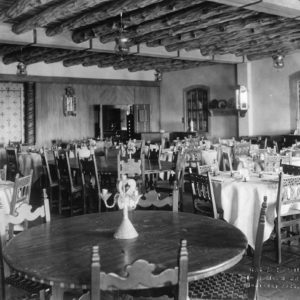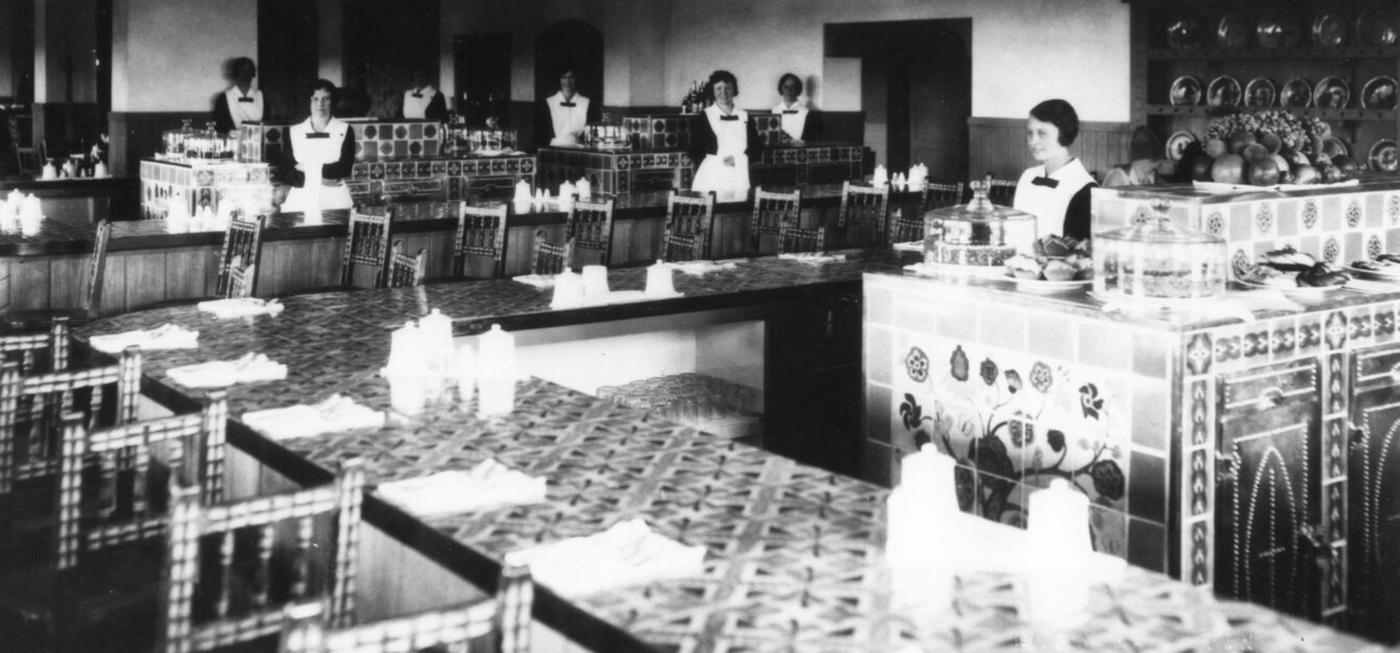

La Posada embodies the visions of both Mary Elizabeth Jane Colter, the hotel’s renowned architect, and Allan Affeldt, its current owner.
The History of La Posada: A Tale of Two Visions
La Posada embodies the visions of both Mary Elizabeth Jane Colter, the hotel’s renowned architect, and Allan Affeldt, its current owner. But the story really begins with Fred Harvey, who “civilized the west” by introducing linen, silverware, china, crystal, and impeccable service to railroad travel. (He was so legendary that MGM made a movie called The Harvey Girls starring Judy Garland.) Harvey developed and ran all the hotels and restaurants of the Santa Fe Railway, eventually controlling a hospitality empire that spanned the continent.
In the 1920s, Harvey decided to build a major hotel in the center of northern Arizona. “La Posada”—the Resting Place—was to be the finest in the Southwest. Construction costs alone exceeded $1 million in 1929. Total budget with grounds and furnishings was rumored at $2 million (about $40 million in today’s dollars). They chose Winslow, then (as now) the Arizona headquarters for the Santa Fe Railway. Winslow was ideally situated for a resort hotel since everything to see and do in northern Arizona is a comfortable day’s drive. They asked Colter to design the new hotel.
Colter worked for the Fred Harvey Company from 1905 until her retirement in the 1950s. Although famous for her magnificent buildings at the Grand Canyon, she considered La Posada her masterpiece. Here she was able to design or select everything from the structures to the landscape, furniture, maids’ costumes, and dinner china. Many people consider this the most important and most beautiful building in the Southwest.
After Its Heyday: La Posada’s Fate
La Posada opened May 15, 1930, just after the stock market crash of 1929, and remained open for just 27 years. In 1957, the hotel closed to the public. The museum-quality furnishings were auctioned off in 1959. In the early 1960s, much of the building was gutted and transformed into offices for the Santa Fe Railway. Several times over the ensuing 40 years, the building was nearly demolished, as recently as 1994 when the railway announced its plans to move out for good.
Saving a National Treasure
The National Trust for Historic Preservation found out about La Posada’s peril and added it to their endangered list — where it came to the attention of Allan Affeldt. But La Posada was never for sale. Allan Affeldt purchased it from the Santa Fe Railway after learning that the property was in danger. He visited the hotel in 1994 and decided to help local preservationists save it. This daunting task entailed negotiating for 3 years with the railroad and resolving various legal, environmental, and financial obstacles. He established La Posada LLC to take on the enormous risk and complexity of the estimated $12 million restoration. Allan and his wife Tina Mion moved in April 1, 1997. Daniel Lutzick became the third partner and General Manager.
Although none of the partners is a hotelier by training, they have accomplished what once seemed impossible—transforming a forgotten but magical place into a living museum. Allan oversees the overall rehabilitation—design, architecture, financing, and planning. Tina, a renowned artist, paints in her studio upstairs; her art is now an integral part of La Posada experience. Dan, a sculptor, maintains day-to-day operations of the hotel as general manager and coordinates exhibits and events. He, and wife Ann-Mary, operate Snowdrift Art Space down the street at 108 West 2nd.
The Fantasy: Mary Colter’s Vision
Mary Colter always began designing her buildings by creating a rich fantasy about their history. She envisioned La Posada as the grand hacienda of a wealthy Spanish landowner, whose family lived here for 120 years, occasionally expanding the hotel until it finally resembled the structure we see today. This fantasy guided every aspect of her architectural design.
In her created backstory, the estancia had been wrested from the wilderness before there were cattle, before the steam trains shattered the stillness of the high desert, by the great, great grandparents of Don Alphonso de los Pájaros, the last Don of the La Posada.
The first Don and Doña, Spanish Basques by way of Mexico, arrived in the early 1800s with a collection of books and exotic birds in elaborate, wrought iron follies. They set about building La Posada as an oasis in this strange land of dancing katsina spirits and Navajos on Spanish horses courtesy of Don’s Tovar and Onate generations before.
The oldest part of the home—the central two floors—rose like a dream adrift in a sea of wild sage. The second Don Pájaros grew the herd to 20,000 head, watering greedily from the headwaters of the Little Colorado all the way to Grand Falls, and added the east wing (now the dining room and railway offices) as the ranch quarters. Here the empire prospered: Furniture was made, ranch hands bunked down, and the huge ranch kitchens produced everything from tallow candles to hides for the market at Santa Fe and for trade to the Indians.
To relieve the isolation, the family traveled and collected. The third Don fell from his horse at the age of 43, leaving the Doña to reign, queen of the painted desert, for 30 years. It was she, finally too old to travel, who sold land to the Atlantic & Pacific on the condition that their shiny trains pass the front door of La Posada and bring the world to her, a parade of steel and steam, passengers marveling at the grand hacienda on their way to fortune in California.
The fourth Don Pájaros was a man of great culture born to fabulous wealth and a million-acre ranch. He added the west wing—33 guest rooms for his friends—and built gardens that were the envy of the Arizona Territory. By 1920, the hacienda looked as it does today—72,000 square feet of wonders from around the world.
But then came the market crash of 1929, wiping Don Alphonso out, including everything generations of the Pájaros family had built. La Posada, Don Alphonso’s family home for 120 years, had to be sold to the Santa Fe Railway.
It was the end of an era. La Posada would no longer pass from generation to generation of the Pájaros family, but he felt a sense of peace that this beautiful “resting place” would be shared with others. The Harveys had been contracted to run the hacienda as a new hotel, promising to maintain La Posada like a proud estate. The guest rooms would be rented. Travelers would dine beneath the Pájaros’ magnificent chandeliers, seated beside the Pájaros’ patron saints—planting, cooking, and building in their fragile and forgotten innocence.
In the early dawn of his last day in this place he loved, the childless Don Alphonso bade a quiet goodbye to his staff and beloved La Posada and walked out the door with nothing but the ebony cane of the first Don and two parrots perched happily on his shoulders. He whispered goodbye to the birds and old trees, to the art and the furniture, and to the memories collected by four generations of his fabled forebears quietly observing from every corner of the hacienda. “Keep watch for me,” he murmured.
Don Alphonso de los Pájaros was never seen again.
Every spring, though, a flock of turkey vultures arrives, Spanish Grandees in black satin, who watchfully circle until winter. Guests still claim to see the Don at twilight, quietly strolling the gardens in the magnificent Arizona sunset.
This detailed and moving story was the brilliance of Mary Colter’s design process. And we thank her for that.


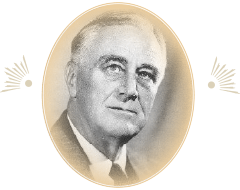

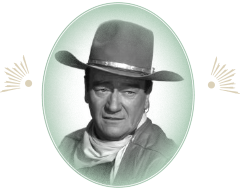
Q: What do all these movie stars and politicians have in common?
A: They have all visited La Posada. During its heyday in the 1930s, the hotel was a favorite destination of the Hollywood jet set.
Albert Einstein
Alice Faye
Amelia Earhart
Anne Morrow Lindbergh
Betty Grable
Bob Hope
Carole Lombard
Charles Lindbergh
Clark Gable
Diane Keaton
Dorothy Lamour
Douglas Fairbanks
Ed Ruscha
Gary Cooper
Gene Autry
Governor Jane Hull
Governor Janet Napolitano
Grant Withers
“Hopalong” Cassidy
Howard Hughes
Hugh Downs
James Cagney
James Turrell
Jane Russell
Jimmy Doolittle
Jimmy Stewart
John Huston
John Wayne
Lauren Hutton
Lionel Barrymore
Mary Elizabeth Jane Colter
Mary Pickford
Pola Negri
President Franklin Roosevelt
President Harry Truman
Representative Isabella Greenway
Representative J.D. Hayworth
Robert Young
Roddy McDowell
Sam Maloof
Senator Barry Goldwater
Senator John Kerry
Shirley Temple
The Crown Prince of Japan
The Earl of Sutherland
Tom Ford
Victor Mature
Wallace Berry
Wiley Post
Will Rogers
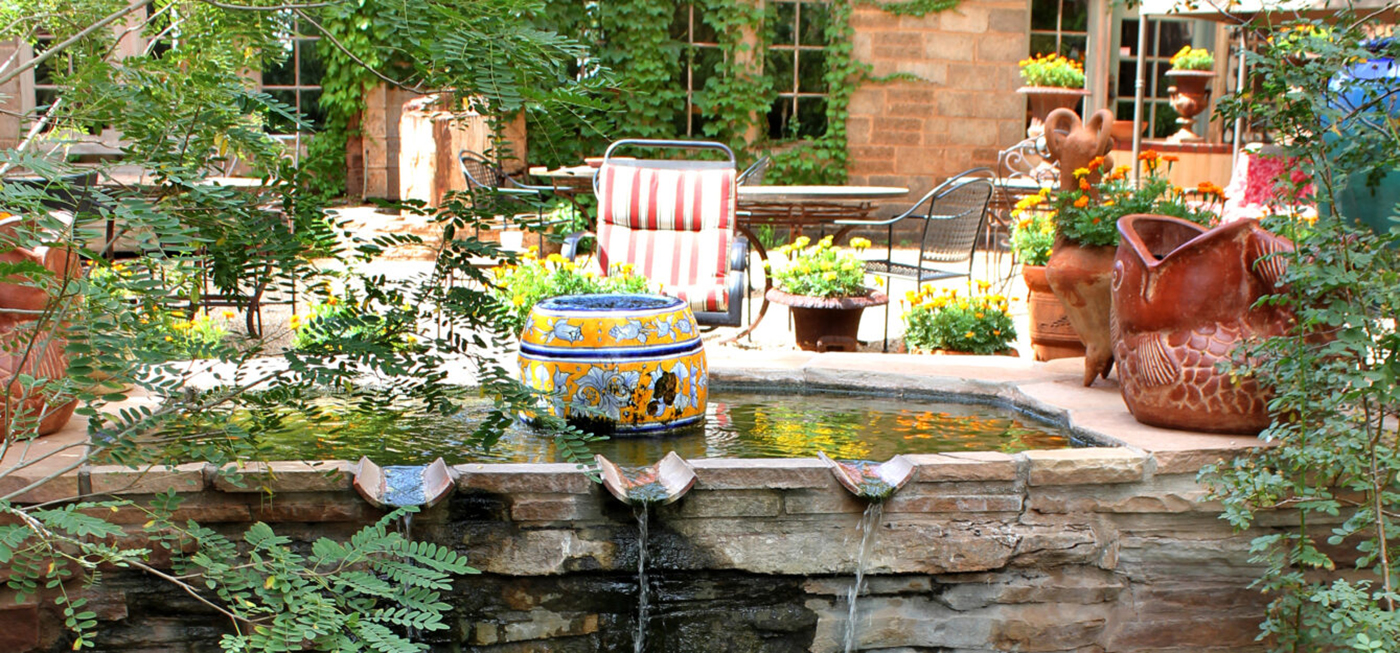
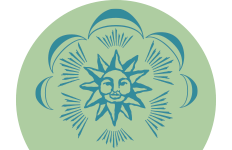
“THE RESTING PLACE”
La Posada is so much more than just a hotel and offers many intimate and peaceful environments both inside and on the grounds of the hotel.

